Vrienden van het Airborne Museum
SOCIETY OF FRIENDS OF THE AIRBORNE MUSEUM OOS TERBEEK Utrechtseweg 232, 6862 AZ Oosterbeek,Netherlands Representative in Gr.Britain:Mr.A.Maynard,M.B.E.
49,Glenfargroad,Catford,London SE6 LXN
Tel.: Ol.698.8969
NEWSLETTER No,10. may 1982
Editor:Drs.R.P.G.A.Voskuil.
Dear Friends,
Many members of our society from nearly all parts of the country attended the third A.G.M, on 12 March.Our British representative,Mr J.Maynard came over from London for the occasion.
The committee is pleased with the interest shown and with the increase in membership. The society can thus continue and even expand its activities.
As you may know,Mrs.J.Smit-Duchateau took leave as a committee member during the A.G.M. Enthousiastic,always ready to help and tireless,she has been a valuable collegue.
We owe her our gratitude and we thank her again.
Mr.C. van Roekel has been nominated as her successor.Together with Mr.Voskuil he will take care of the Newsletter.
Two afternoons devoted to special subjects are in preparation.During the Open Days at Deelen Airfield on 9,10 and 11 June our society will sell articles from the Museumshop and we shall do the same during the Airborne March on 3 September.
In this way we try to focus attention on the Museum and give our support.
Drs.J.Smits,Chairman.
From the editor.
This is the tenth issue of our Newsletter,an anniversary’number which appears shortly after the first lustrum of the Airbomemuseum at the Hartenstein.The Museum was reop¬ened in its present location on May 11,1978.Since then there has been no reason to complain about a lack of visitors.Much is being done to improve the Museum and to add to the collections.Many visitors therefor return regularly to see what is new.
The credit for these activities goes to trustees and staff.Many of the former have spent a great part of their spare time to shape the Museum into its present form. Our Society also benefits from the increasing interest in the events of September 1944.The membership is continually growing.
Through the Newsletter we aim to keep the members informed about the developments with¬in the Museum.
Starting with this issue we are introducing a new feature;short articles about aspects of the battle which have hardly or never been written about and about which questions have arisen.From now on you will therefore find a supplement to the newsletters edited by our new committee member,Mr C.van Roekel.
We hope that our members will contribute articles and that the experiment will prove succesful.
R.P.G. A. Voskuil.
In memoriam Mr. Robert Reinier Schuring.
The excursion costs 25 guilders per person,including lunch.There is place for 45 partici pants,but if a considerably greater number express interest,the excursion may be repeated.
Some points from the A.G.M. held on 12 March 1983,
In addition to the points mentioned above in the presidents letter the following should also be noted:
– 78 members were present.
– The General Report and the Treasurer’s Report for 1982 and the budget for 1983 were approved.
– Election to the committee.Mr Eykelhoff and Mrs.Smit-Duchateau were due to retire. Mrs Smit-Duchateau indicated that she did not seek re-election.In absence of other candidates.Mr.C.van Roekel,proposed by the committee,was elected and Mr Eykelhoff was re-elected.
The committee now comprises Mr.J.Smits – President.
Financial Committee.Mr Kardol resigned after being a member of the financial Commit¬tee for 2 years.Messrs v.Soest and Bekkers were willing to serve for T
Mr.O.Luursema offered to act as reserve member and will take BIACP another year.
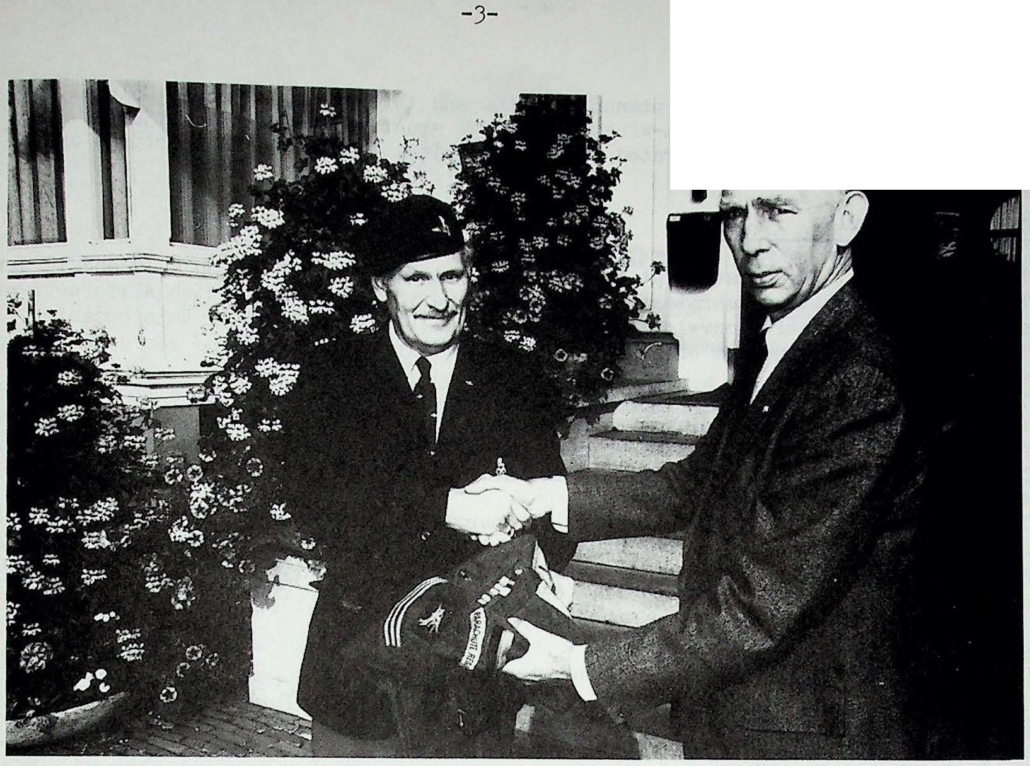
Tex Banwell presents his battledress to director Wilhelm.(fotograph B.de Reus.)
Tex Banwell donates his battledress.
Mr Keith(Tex) Banwell has donated his battledress,which he wore during the battle of Arnhem and has since carefully kept,to the Airborne Museum.Tex Banwell served in the 10th Parachute Battalion which was dropped over Ginkelse Heath on 18 September 1944. Mr.Banwell frequently took part in the annual commemorative parachute drops over the Ginkel Heath.
Director Wilhelm – behind the scenes.
Work in the Airborne Museum is carried out by a team of full-time and part-time staff. Since 1 November 1979 this team is led by Colonel Wilhelm,the director.Col.Wilhelm has had a long military career. From the beginning of the war he was active in the Dutch resistance.After being arrested by the German Secret Police (S.D.) in 1942 he was in¬terned at Arnhem for some time. In November 1944 he managed to escape to England where he joined the S.O.E. and was trained for special operations,He received parachute training at Ringway.
In May 1945 he left for Ceylon where the S.O.E. operated under the name “Force 136”. In August 1945 he was dropped over Sumatra together with three other parachutists of the “Anglo Dutch Countersection” of Force llb.The four carried out reconnaissance tasks and assisted prisoners of war and civilian detainees.
In April 1946 he was transferred to Batavia,the present day Jakarta,where he served with the Military Intelligence Service.Half a year later he was posted to the Parachute Traini% School at Hollandia in the then Dutch New Guinea.
In 1948 he returned to the Netherlands but after two years he left again, this time to Korea where he was wounded in action. ,
On his return to the Netherlands he serves in a number of capacities including the staff of the Command Tactical Airforces and the Directorate Personnel of the Royal Dutch Air Force Later he was commander of the 3rd Group Guided Missiles and the Royal Air-
Force Academy.
In 1965 he was promoted to Lieutenant-Colonel and three years later to Colonel. Colonel Wilhelm wears the para-wing with golden wreath for operational jumps. Colonel Wilhelm has been decorated on many occasions both in the Netherlands and abroad.
Open Days at Deelen Airfield.
The Society will have a stand at the Open Days at Deelen Airfield on 9,10 and 11 June. The Open Days are to celebrate the 70th anniversary of the Royal Dutch Airforce.A new sticker,a commemorative envelope and a poster will be introduced on this occasion.
The sticker shows a number of Dakotas on a light blue background and costs one guilder each.
The commemorative enveloppe shows an aerial photograph of the bombed airbase at Deelen taken on 6 September 1944,eleven days before “Market Garden”.The envelope will have a field postmark which has never been used before.100 envelopes will be reserved for mem¬bers at a reduced price of four guilders including postage in the Netherlands.(one envelope per member.)
The subject of the poster is the start of Operation Market and shows a colour picture of a number of Dakotas ready to leave for the Netherlands.The cost for members is five guilders each,including postage in the Netherlands.
Mrs.J.M.de Langen,Secretary.
New items in the Museum Shop.
Recently introduced items are a new car sticker (light blue Pegasus on a maroon back¬ground, T-shirts, sweatheirs, scarves (special design) and a wall tile with a picture of Hartenstein.
Postal facilities in the Museum.
By popular demand a postage stamp machine and a post box have been installated in the Museum cafetaria.
Audio-Visual introduction to Market-Garden.
The installation of audio-visual equipment to explain Operation Market-Garden is almost complete.Computer controlled,the equipment gives an excellent introduction to those visiting the museum by means of slides and lamps on the model,accompanied by commentary in Dutch,English,German or French.The Dutch commentary has already been used many times;the other languages will be introduced as soon as various faults have been ironed out.
Reprinting of an interesting book.
The book “Kroniek van Ede” by the late Th.A.Boeree has been re-issued by Gijsbers & van Loon.The book provides a wealth of information about the Dutch partisans on the Veluwe and about the unsuccesful parachute landings and the fate of the parachutists.The cost in the Netherlands is 29,50 guilders.The book has not been translated.
Newsletter no 11,
The next newsletter will appear at the beginning of September.
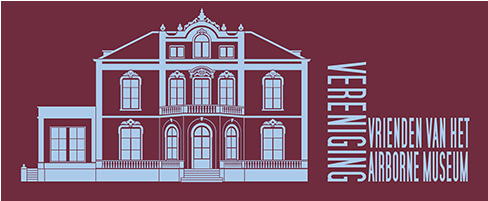
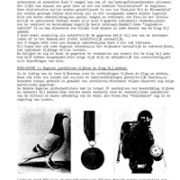
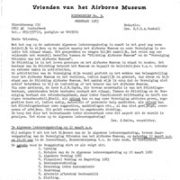
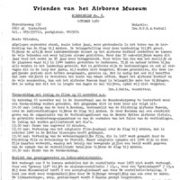
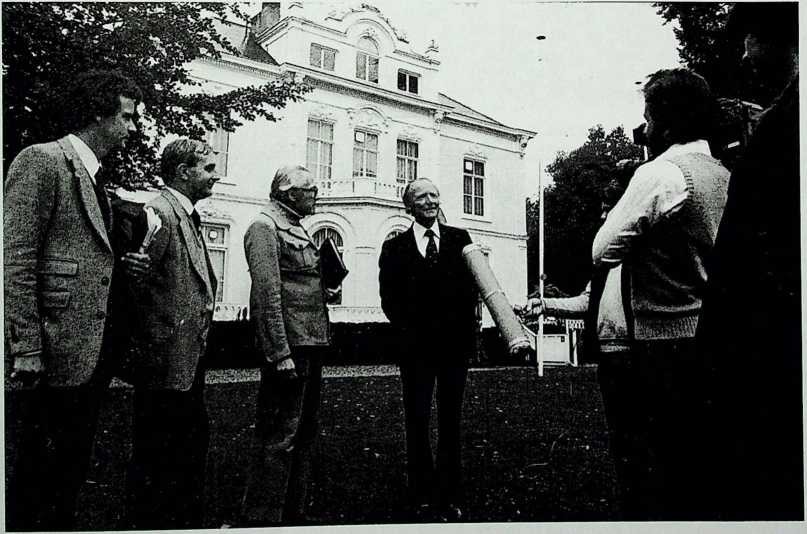
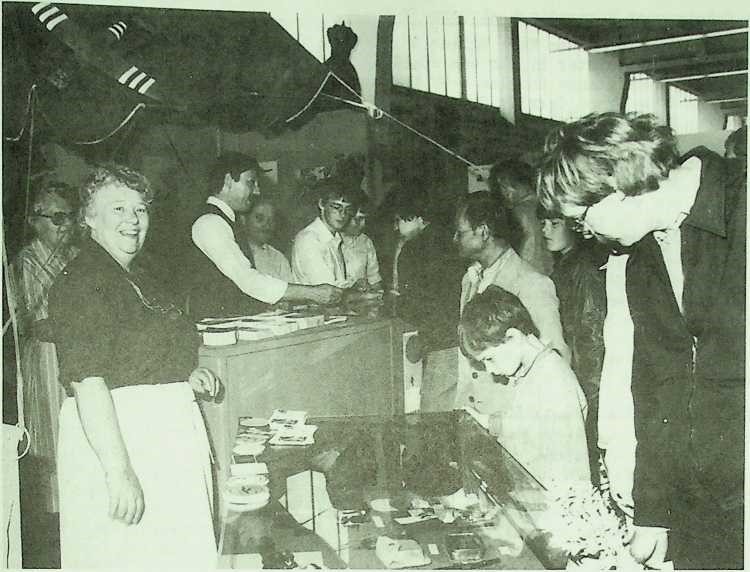
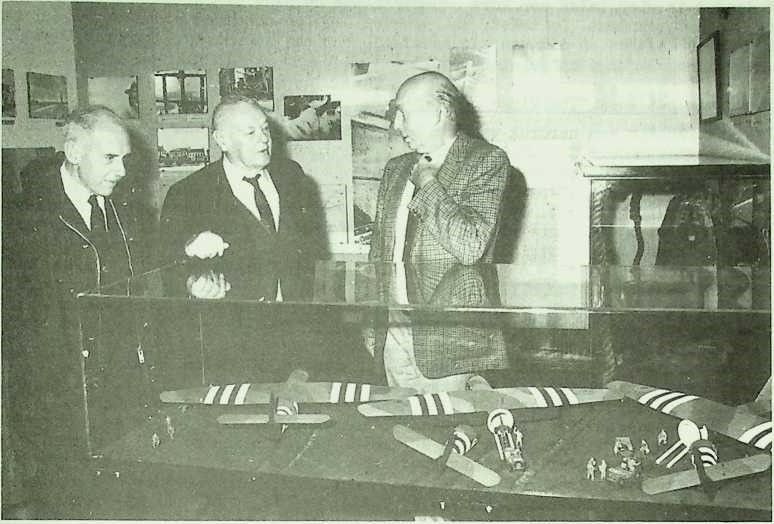
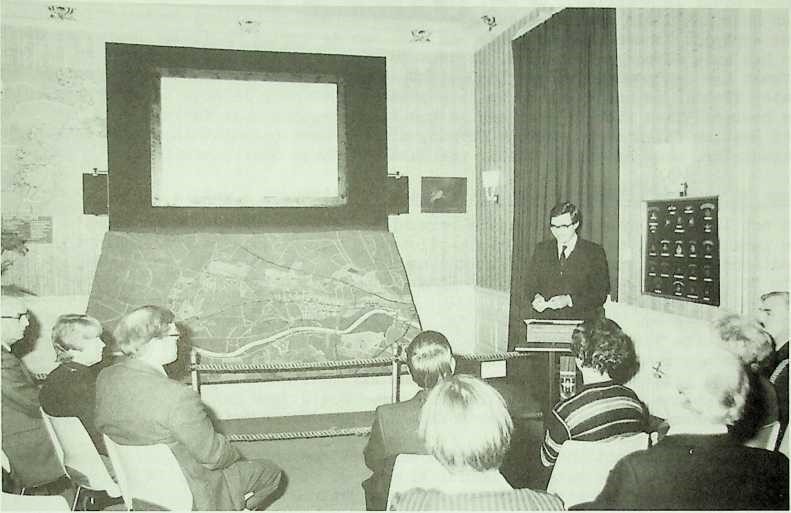
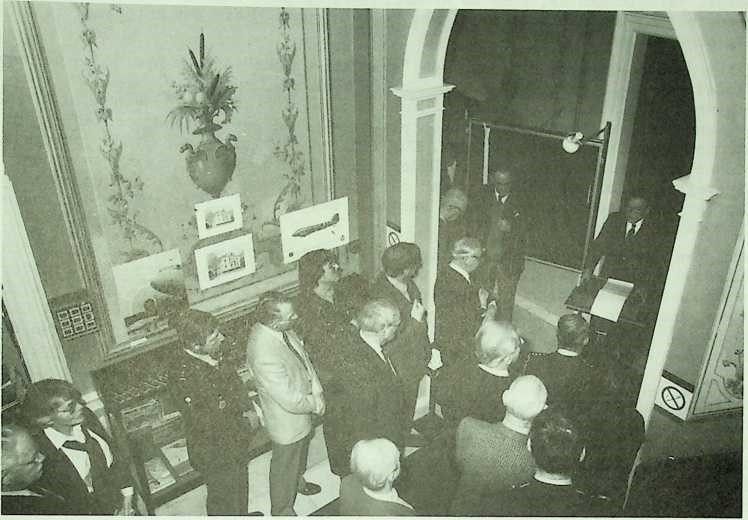 The exhibition “The Battle of Arnhem in paintings and drawings” was opened officially by Mr. Charles L.J.F. Douw van der Krap. (photo de Reus)
The exhibition “The Battle of Arnhem in paintings and drawings” was opened officially by Mr. Charles L.J.F. Douw van der Krap. (photo de Reus)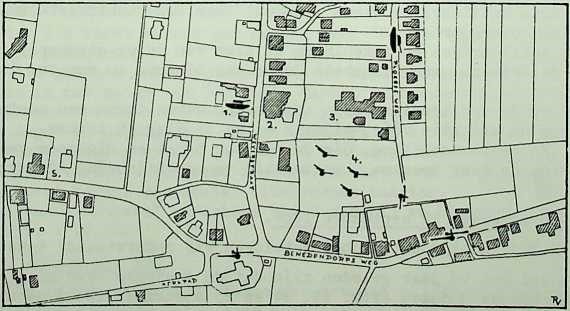
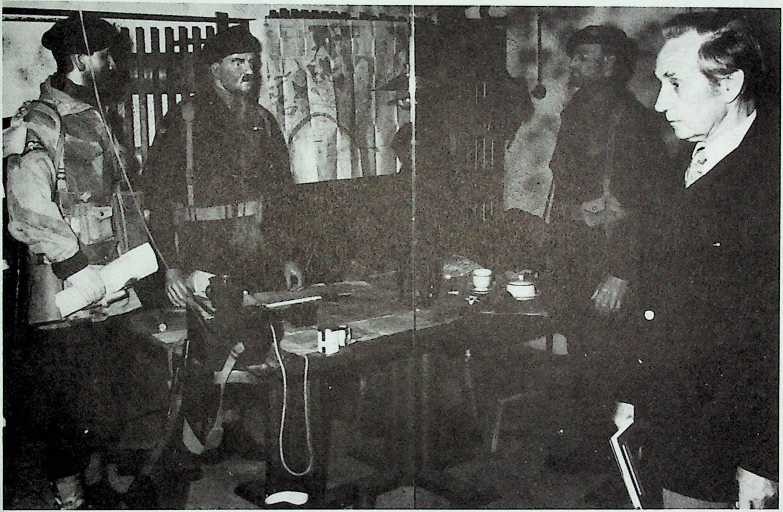 Brian Urquhart at the Airborne Museum (Photo: B. de Reus)
Brian Urquhart at the Airborne Museum (Photo: B. de Reus)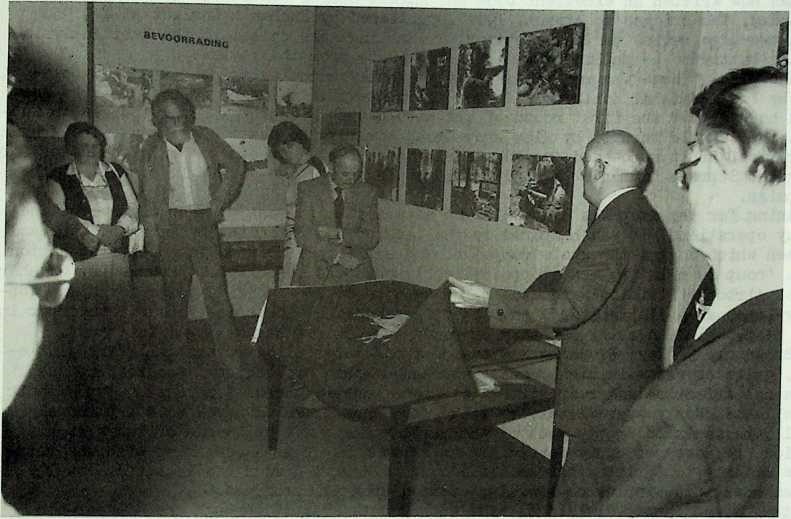
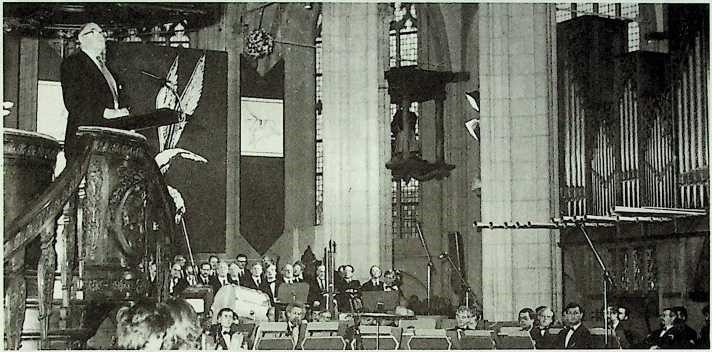
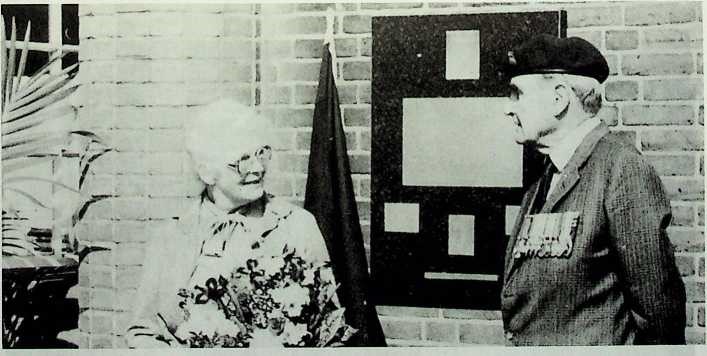
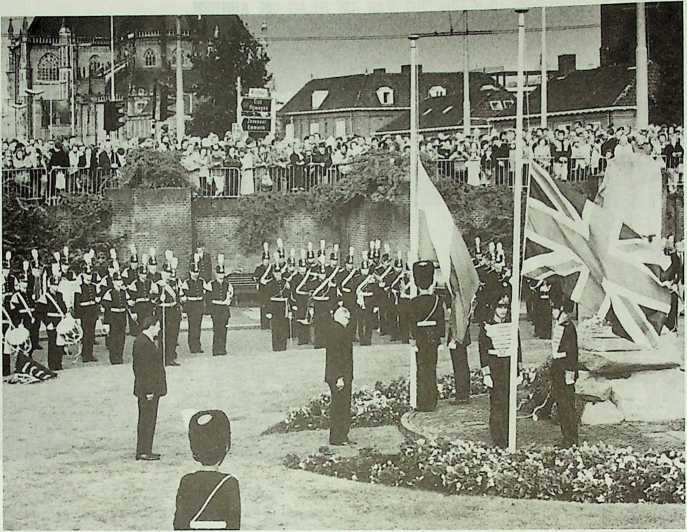
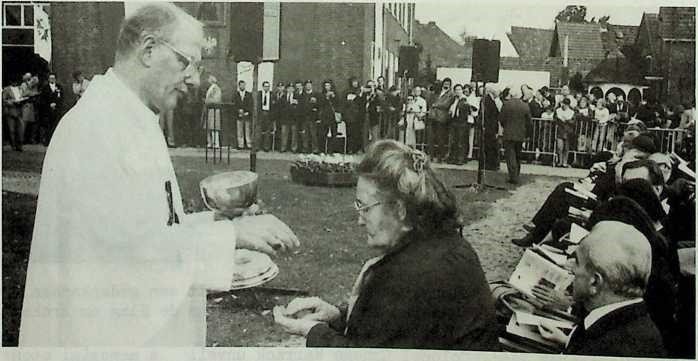
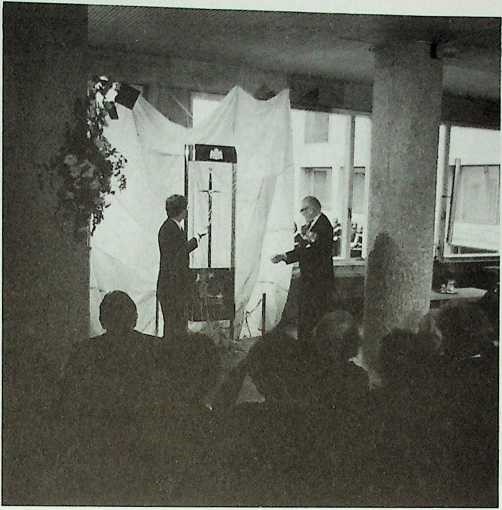
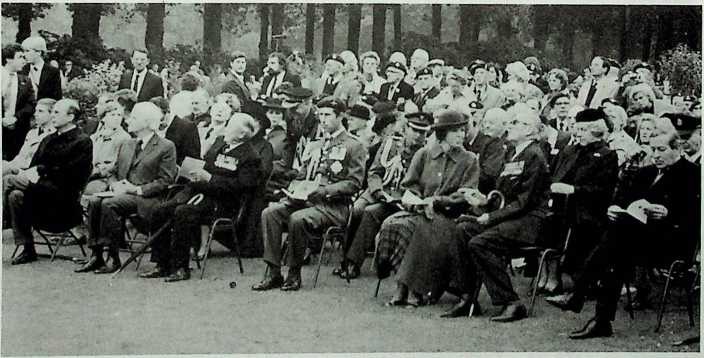
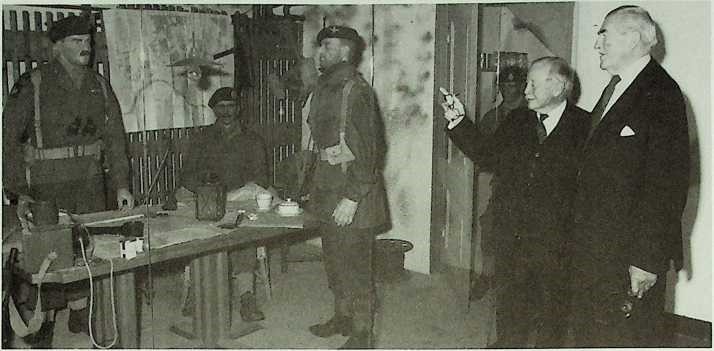
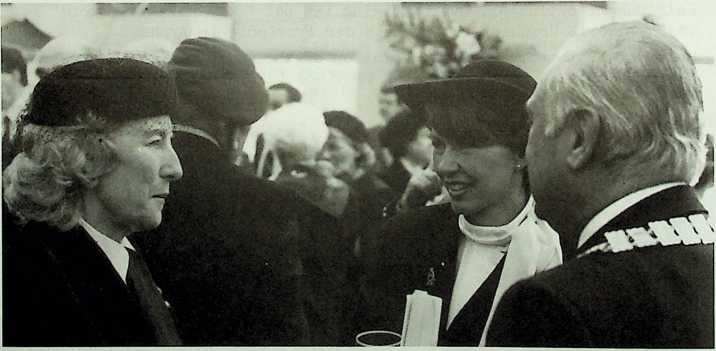
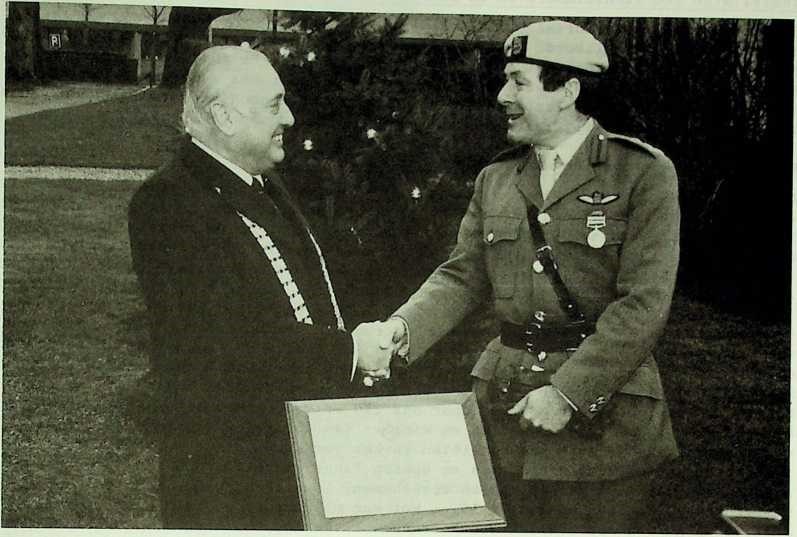 Jhr.Mr. H.G. van Holthe tot Echten, Mayor of Renkum Municipality thanks Brigadier-General D.E.Canterbury for the Christmas tree given by the Army Air Corps, (photo: B.de Reus)
Jhr.Mr. H.G. van Holthe tot Echten, Mayor of Renkum Municipality thanks Brigadier-General D.E.Canterbury for the Christmas tree given by the Army Air Corps, (photo: B.de Reus)